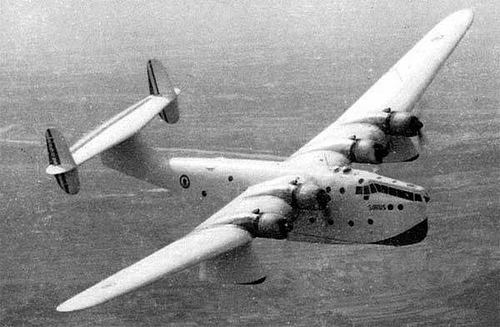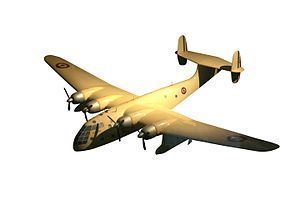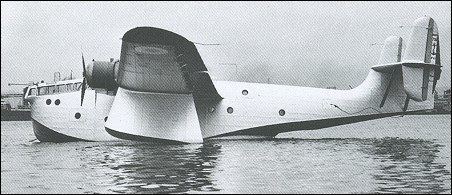Top speed 330 km/h Length 24 m Manufacturer Breguet Aviation | Wingspan 40 m Introduced 1945 | |
 | ||
Similar Breguet Deux Ponts, Breguet 1100, Breguet 693 | ||
The Breguet 730 was a French flying boat of the 1930s. Built to meet the requirements of the French Navy, it was ordered into production but no aircraft were delivered before France surrendered to Germany in June 1940. Four remaining incomplete airframes were completed after the end of World War II, serving with the French Navy until 1954.
Contents
Development

The French Navy issued a specification for a new long-range flying boat to replace the obsolete 521 Bizerte in May 1935. Breguet designed a large four engined flying boat to meet the requirement, the Breguet 730, competing against designs by Latécoère (the Latécoère 611), Lioré et Olivier (the LeO H-440) and Potez-CAMS (the Potez-CAMS 141).

The first prototype, the Br.730-01, powered by four Gnome-Rhône 14N engines, flew on 4 April 1938 at Le Havre. It was wrecked, however, on 16 July 1938 when it attempted to land in shallow water. Despite this setback, however, an order for four production aircraft was placed, followed by a contract for unlimited production on the outbreak of World War II in September 1939. This order was cut in early 1940 when it realised that attrition of maritime patrol aircraft was very low.
Operational history

No production aircraft had been completed when France surrendered on 22 June 1940, when production was suspended. It was restarted by the Vichy government, with the wing of the wrecked prototype being combined with the hull of the first production machine to produce the Br. 730 No.1, which was ready to fly when the German invasion of Vichy France prevented testing. Production of the remaining 11 aircraft continued extremely slowly under German occupation, with eight being destroyed in an Allied air raid on 6 April 1944.

The Br.730 No.1 was finally flown for the first time in December 1944, after the Germans retreated from the South of France. This aircraft, named Véga, was delivered to the French Navy, who used it as a long-range transport in April 1945, with a second Br.730 (Sirius) completed in May 1946. The remaining two aircraft (Altair and Bellatrix) were completed with redesigned nose, new floats and more powerful engines, and were designated Br.731.

Véga was destroyed in a crash in January 1949, with a second aircraft being destroyed in 1951. The last Br.731 was retired on 20 January 1954.
Variants
Operators
France
Specifications (Br.730 No.01)
Data from Warplanes of the Second World War, Volume Five, Flying Boats
General characteristics
Performance
